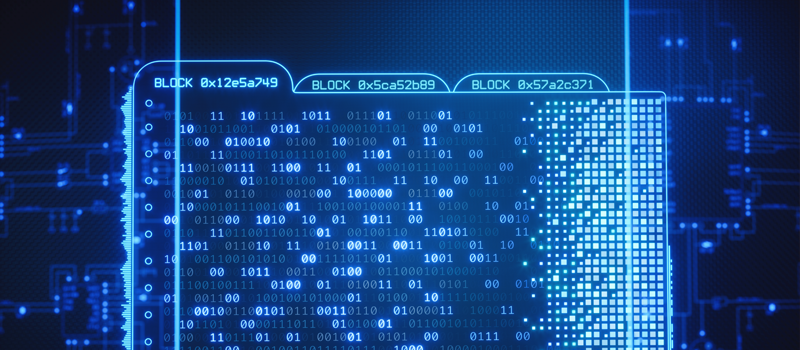 The term “blockchain” is widely used, but also widely misunderstood. It will – in the medium term – have many implications and use-cases within the telecoms industry, but often not in the ways that most people think. It challenges our assumptions about the nature of “trust” – or more simply, ways to store, share and access data, and perform efficient transactions.
The term “blockchain” is widely used, but also widely misunderstood. It will – in the medium term – have many implications and use-cases within the telecoms industry, but often not in the ways that most people think. It challenges our assumptions about the nature of “trust” – or more simply, ways to store, share and access data, and perform efficient transactions.
At its core, a blockchain (or more generally a “distributed ledger”) is a way of creating secure, shared databases which are not owned or controlled by a single party. Instead, various computing mechanisms are used to ensure that data cannot be changed by anyone, despite the lack of central control. This is called “immutability” and is what makes this different from traditional databases/ledgers like telecoms billing records, bank accounts (where a bank has control), or governments’ repositories of citizens’ ID, property rights, and tax affairs.
A decentralised system essentially validates its own accuracy through various mechanisms of “consensus” between the parties involved. Why is this important? It’s because central authorities are often slow, error-prone, costly, or even corrupt. Or perhaps instead, every participant keeps their own silo databases, with the need for complex integration, reconciliation, and dispute-resolution, when they have to work with or bill each other. For example, settling international termination charges or roaming fees can involve lots of time (e.g., monthly cycles), a potential for fraud or revenue-leakage, and lots of lawyers to sort out problems.
The most common sort of data in blockchains relates to transactions or entitlements – such as who owns a given “coin” or “token,” and what happens when they transfer it to someone else. It is obviously important that only one person or organisation can claim and prove “ownership.” But other data can also be stored (encrypted), or perhaps a unique tag, like a unique barcode, which represents an external, larger dataset.
In telecoms, databases are incredibly widespread. They cover customer identity and billing information, registries of numbers and licenses, supply chain management data, configurations of equipment, maintenance and service logs, geospatial locations of equipment, and hundreds of other uses. Some are efficient and fault/fraud-tolerant, while others can be expensive or slow for the various participants. Potentially, all could be “touched” by blockchain, reducing costs or removing friction, as well as new use-cases emerging from its decentralised properties.
There are two main types of distributed ledger technology (DLT):
- Public blockchains such as BitCoin and Ethereum, plus hundreds of smaller ones. Anyone can participate in these, either to perform transactions or store data. Typically they use cryptocurrencies or “tokens” to represent value or a “utility,” which can be anything from data-storage, to an open-marketplace for IoT data, to the rights to access the Internet via a shared mesh-network.
- Private blockchains, using standards such as HyperLedger, are more useful for smaller groups of B2B users, such as consortia of trading partners, or groups of peers such as roaming or wholesale telcos. They could have a mutually-operated “shared source of truth” without needing to maintain separate systems, or designate a central authority to arbitrate. Beyond just data-storage and access, blockchain technologies also permit other functions. One particular concept is that of a “smart contract”, which is essentially software that can trigger a transaction (perhaps a payment, or transfer of data) when certain conditions are met. For example, this could be used to automate interactions such as “settle the interconnection fees between two carriers immediately on call-completion, after mutual validation of the duration and quality” or perhaps more sophisticatedly “only pay $x roaming fee if the customer actually obtained >10Mbit/s speed, otherwise deduct 20%”.
Other possibilities for telecoms-related sectors include identity-management of individuals and devices, creating open marketplaces for short-term contracts, offering enterprise managed services to guarantee “anti-tamper” for IoT data, micropayments for content, and many more. India’s regulator TRAI has even proposed digital ledgers to store consent for SMS marketing, to help limit the use of spam messaging. Others are trying to re-engineer the basic protocols of networking, such as TCP/IP, based on decentralisation principles.
Overall, it is still in its very early days. There are few “production” deployments of blockchain-based applications in telecoms today. But there are scores of proofs-of-concept being worked on, efforts around standardisation and regulation in numerous industry bodies, and hordes of start-ups (some credible, others less-so) looking at ways to apply various types of blockchains for telecoms and the wider communications/networking space.
Disruptive Analysis recommends companies analyse the specific possibilities – short and longer term – for their individual circumstances, and start experimenting early. The blockchain space is astonishingly dynamic, with new possibilities and challenges emerging every week. There is a measure of hype – but also some likely genuine disruptions around the corner.
Disruptive Analysis is running a workshop on telecoms/network uses of Blockchain in London on 3 July. Please see here for more details, or contact information@disruptive-analysis.com if you are interested in a custom workshop or private advisory project.




